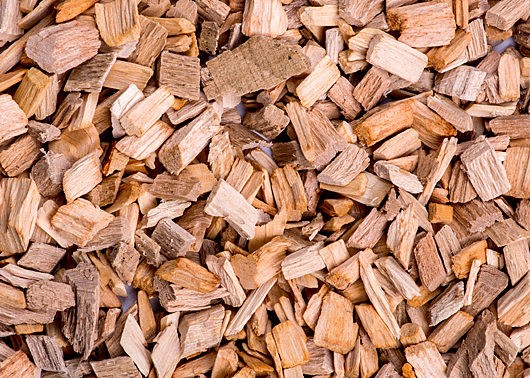renewable energy
South Tahoe Refuse Investigates New Clean Energy Technology to Offset Fossil Fuels
Net Metered Gasifiers Generate Heat & Electricity, Offering 24/7 “Always-On” Renewable Energy Using Local Wood Waste

New Clean Energy
WHAT
WHEN
WHY
HOW
WHERE
WHAT
South Tahoe Refuse (STR) is exploring the installation of a 125-250kW wood waste gasifier at its South Lake Tahoe facility. Gasification has been around since the early 1800’s – instead of burning, chemical reactions turn the green waste into a gas that is a cleaner substitute for fossil fuels. If installed, the net metering system would offset the majority of grid electricity and natural gas used at the STR site by using 10% of the wood waste currently collected by STR, and reduce traffic and emissions from transporting waste material out of the Basin by over 70 truckloads each year.

Figure 1: Waste woody material is currently collected, processed, and stored at STR until it is transported to Nevada for disposal. Material is sourced from defensible space thinning and C&D waste.

Figure 2: Wood energy gasifier systems offer an alternative to disposing of waste wood, and are common in mountain towns throughout Europe. Pictured is a 135kW biomass gasifier system in the South Tyrol region of Italy, near the Dolomites.
WHEN
In November 2022, STR received approval from the Tahoe Regional Planning Agency (TRPA) to allow for a permitting application to be submitted as a pilot project for the area. The project will need to go through the regular permitting process to seek project approval.
STR is now working with our team to develop a permit application which will include a more extensive environmental analysis.
WHY
Woody biomass material is currently being generated in the Tahoe Basin from fuel reduction treatments and defensible space thinnings meant to reduce the risk and impacts of wildfire. A portion of that material is already collected at the STR facility, processed into wood chips, and transported 50 miles roundtrip out of the Basin to Nevada for disposal as compost. A net metered biomass system at STR would use about 10% of the woody material STR currently collects and processes, offsetting over 70 truckloads of wood chips out of the Basin each year. This will reduce truck traffic and associated greenhouse gas emissions. In addition, as a renewable energy resource that is available 24/7, the gasifier will provide increased energy resilience for STR operations.
HOW
Gasifiers act like a conventional generator, but use wood gas instead of fossil fuels. Gasification is not combustion – instead, biomass is “baked” in the absence of oxygen to create syngas, which is passed through a filter to reduce particulates before entering a generator and producing electricity and heat. Systems have very low particulate emissions and no visible smoke from the stack, with some amount of NOx similar to other generators. No water is required, and waste byproducts include a small amount of ash and tar.

Figure 3: Comparison of annual criteria pollutant emissions between a 125kW waste wood gasifier and a representative Tier 3 125kW diesel generator.
WHERE
Net metered wood energy systems can be located wherever there is a moderate energy load and at least 1/10th of an acre is available for equipment. STR is an ideal location to pilot such a system in the Tahoe Basin, since woody material is already collected at the STR facility, processed into wood chips, and transported 50 miles roundtrip out of the Basin.

Figure 4: The proposed gasifier system will be located adjacent to the existing STR facility, and will cause no increase to the property footprint.
Frequently Asked Questions
What is Woody Biomass?

Figure 1: Woody material can be generated as a byproduct from a variety of activities, such as forest management, defensible space and FireWise thinning, waste urban wood, and other wood manufacturing processes.
Where will woody material come from for the pilot STR project?
STR currently receives and processes approximately 10,000 tons of woody material each year, the majority of which is transported out of the Basin to dispose of as compost. This material is generated from green yard debris, clean construction and demolition (C&D) material, and residual waste from defensible space and fire mitigation activities (i.e., small trees, tops, and limbs) from the surrounding area. The proposed biomass project would use only about 1,000 tons of biomass per year, or 10% of what STR is already handling. Using this material on-site will result in roughly 72 fewer trucks hauling material out of the Basin each year, and a reduction in the associated transportation emissions.
Isn’t there much more woody material being generated in our area from fire mitigation activities that should be sent somewhere? What impact will this small project have on landscape goals for forest restoration?
Many stakeholders in the Tahoe Basin are working hard to implement fuels reduction treatments at a landscape level that are designed to protect communities from the risk of wildfire. In fact, the Tahoe Fire and Fuels Team has already treated nearly 90,000 acres in the Tahoe Basin, especially areas near neighborhoods. These projects generate approximately 10 tons of residual woody material per treated acre, resulting in thousands of tons of biomass that is either burned in slash piles or hauled long distances for disposal at a high cost.
The STR pilot project represents a small-scale, distributed approach to local biomass utilization. While the STR pilot project will use material being generated by community defensible space activities, it is not expected to incentivize additional forest restoration activities in the short term due to its small wood fuel demand. However, demonstrating that wood energy technologies can be unobtrusive, clean, and effective may support a broader community discussion about the value of wood energy in the Tahoe Basin.
What does wood energy have to do with healthy forests?
There is a growing understanding that healthy forests — particularly in areas where fire plays an important role in shaping the landscape — can benefit from some level of active management to reduce heavy fuel loads in the form of small diameter trees and other woody debris [3]. These residuals have a low market value, and high-cost removals often make restoration efforts prohibitively expensive [6].
Wood energy systems can be integrated with climate adaptive forest management practices to help restore fire resilience to our forests and protect communities in the Wildland Urban Interface (WUI). Each year, WUI communities thin forests and burn “slash” piles in anticipation of unpredictable wildfire seasons – with growing demands to increase the pace and scale of these activities across the West. On average, these practices emit ambient PM2.5 (Particulate Matter 2.5) concentrations that exceed the Environmental Protection Agency’s (EPA) air quality standards and easily reach “hazardous” levels of air pollution [2]. Wood energy offers a cleaner, sustainable alternative.
What makes South Lake Tahoe a good region for wood energy? We have…
A locally available stream of underutilized wood. Wasted or underutilized wood is more common than you may think. Wood used to fuel biomass energy systems can come from wildfire fuels reduction, clean construction and demolition material, urban tree pruning, timber harvest residuals, and more.
Critical facilities. Biomass combined heat-and-power (CHP) systems offer an always-on, 24/7 energy asset that can keep the lights on for facilities that can’t afford to have them turned off. This provides the functionality of a fossil fuel generator using renewable resources that are available from local backyards (literally).
Communities implementing fire mitigation activities. Switching to biomass provides a market for forest residuals produced by wildfire fuels reduction and ecological restoration treatments. These systems also divert waste wood that would otherwise be burned in piles or sent to the landfill.
Large energy users. While small biomass systems make sense when the main goal is to replace fossil fuels or you have a free source of wood, impactful benefits are realized as systems get larger in size while remaining aligned with existing forest stewardship efforts and goals.
Local economy enthusiasts. Fossil fuel consumption distributes dollars to large global corporations. Biomass systems instead rely on local restoration economies, benefitting nearby fuel providers, processors, and handlers.
What are the air quality impacts?

Figure 2: Comparison of annual criteria pollutant emissions between a 125kW waste wood gasifier and a representative Tier 3 125kW diesel generator.
What impact do wood energy projects have on GHG emissions?

Figure 3: Carbon emissions modeled for the STR project compared to business as usual. Business as usual includes natural gas use, grid electricity use, biomass disposal as compost, and transportation of biomass. The STR project will reduce transportation of woody biomass, reduce or eliminate grid electricity and natural gas use, and gasify biomass locally.
How do wood energy technologies compare to other renewable energy technologies?
Unlike solar and wind, wood energy can be a baseload firm and flexible technology, with energy available 24/7 [5]. That means that for every hour that energy is needed, biomass systems produce it —rain or shine, through the seasons. In addition, a biomass CHP system can generate the same amount of energy as a solar array for a fraction of the footprint, contributing to our renewable energy goals without sacrificing sensitive landscapes.
What type of wood energy technologies are out there?
There are many types of technologies that enable the generation of electricity and/or thermal energy using woody material. On the smaller scale this can include high-efficiency wood stoves to heat a family home, gasifier units to provide electricity and heat to commercial or institutional end users, a district heating boilers offsetting fossil fuels for ski resorts and towns. There are also some very large biomass systems in the world, like power plants providing hundreds of megawatts to the grid. Each type of system can have very different implications for ecosystem and community health. The South Tahoe Refuse project is considered a small system.

EXAMPLES
Figure X: In Plumas County, CA, a 400kW (thermal) boiler with a 35kW (electric) Organic Rankine Cycle supplements geothermal heating for the Health & Human Services Center, and net meters electricity to the grid.

EXAMPLES
Figure X: Some wood energy systems can be containerized for easier installation in remote areas, like this 125kW gasifier in Scotland.

EXAMPLES
Figure X: Wood energy is common for district energy in mountain towns, like this facility in Lech Austria that provides heat to over 400 properties, including hotels and ski lodges.
References
- Greenhouse Gas Emissions of Wood Pellet Heat In the Northern Forest. Northern Forest Center.
- Jones, Greg et al. “Forest treatment residues for thermal energy compared with disposal by onsite burning: Emissions and energy return”. USDA and US Forest Service.
- Jung, Yoohyun, and Paula Friedrich. “Maps: How Prescribed Burns and Other Treatments Helped Curb Caldor’s Growth.” The San Francisco Chronicle, The San Francisco Chronicle, 21 Sept. 2021.
- Kittler, Brian A. “Biogenic Carbon Emissions and Bioenergy Systems: A Brief Literature Review”. Pinchot Institute for Conservation.
- Matek, Benjamin and Karl Gawell. “The Benefits of Baseload Renewables: A Misunderstood Energy Technology.” Science Direct, 7 Mar. 2015.



